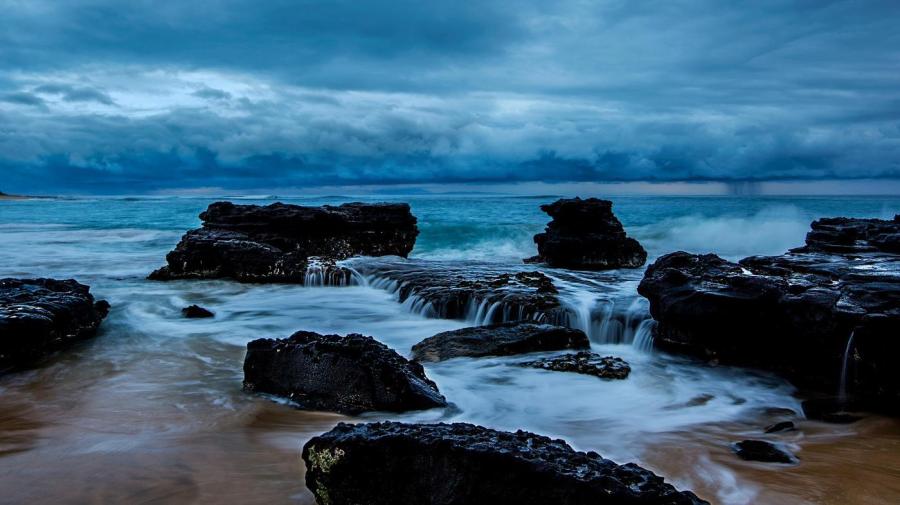What Is the Water Cycle?

The water cycle, also known as the hydrologic cycle, describes the process of how water moves through Earth’s environment. In general, water evaporates from oceans, then it condenses in the atmosphere as water vapor cools. When enough water gathers in clouds, it precipitates back to the Earth’s surface as rain, hail, snow or sleet.
The water cycle occurs due to water and temperature changes. Heating of the Earth’s surface leads to the evaporation of liquid water, and then this water vapor rises up on currents of heat until it reaches cooler areas of the atmosphere, where it cools and condenses into clouds. When clouds get heavy enough with water droplets, they release water as precipitation. That water gathers in oceans, lakes, rivers and streams before it evaporates again. Some ice turns directly to water vapor in a process called sublimation; the reverse is called desublimation. Some of the water infiltrates into underground aquifers, where it sits for long periods of time and can be utilized by digging a well. Most of the Earth’s overall water, 96.5 percent, is found in oceans, seas and bays. Most of the world’s fresh water, 68.7 percent, is held in ice caps, glaciers and permanent snow.





